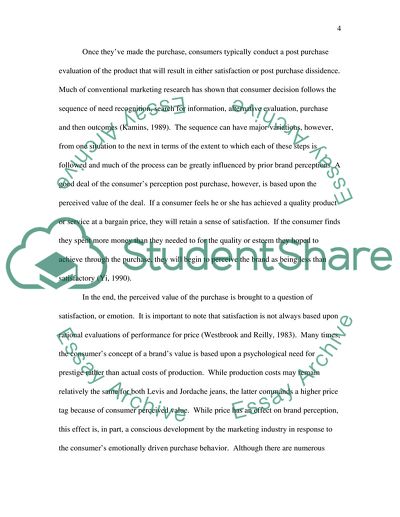Cite this document
(“The Effect of Price on Consumer Brand Perception Research Paper”, n.d.)
The Effect of Price on Consumer Brand Perception Research Paper. Retrieved from https://studentshare.org/family-consumer-science/1544357-this-essay-explores-the-impact-of-price-upon-perceptions-of-brand-value
The Effect of Price on Consumer Brand Perception Research Paper. Retrieved from https://studentshare.org/family-consumer-science/1544357-this-essay-explores-the-impact-of-price-upon-perceptions-of-brand-value
(The Effect of Price on Consumer Brand Perception Research Paper)
The Effect of Price on Consumer Brand Perception Research Paper. https://studentshare.org/family-consumer-science/1544357-this-essay-explores-the-impact-of-price-upon-perceptions-of-brand-value.
The Effect of Price on Consumer Brand Perception Research Paper. https://studentshare.org/family-consumer-science/1544357-this-essay-explores-the-impact-of-price-upon-perceptions-of-brand-value.
“The Effect of Price on Consumer Brand Perception Research Paper”, n.d. https://studentshare.org/family-consumer-science/1544357-this-essay-explores-the-impact-of-price-upon-perceptions-of-brand-value.


